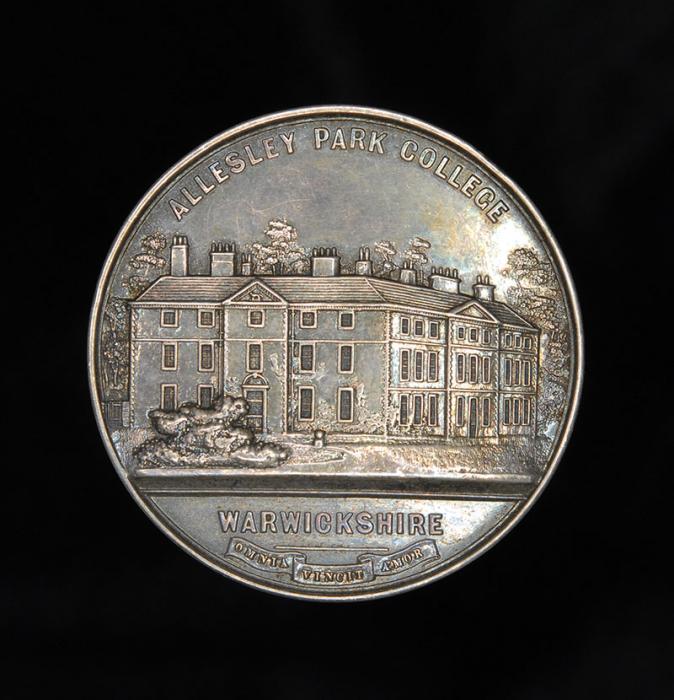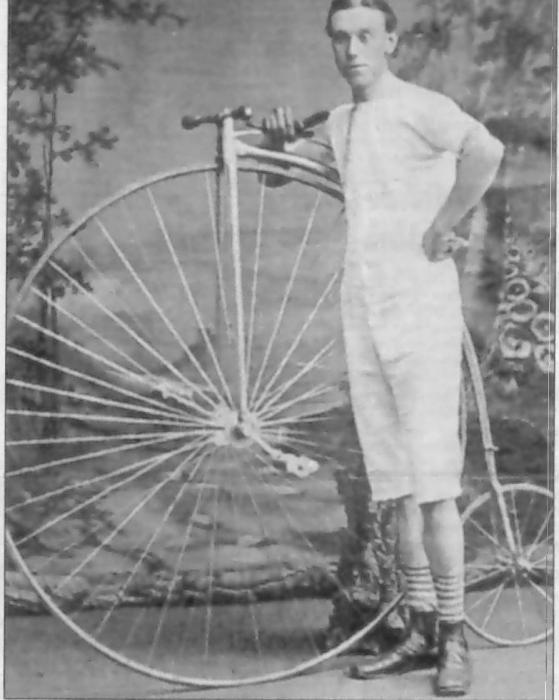I am impressed with the answers to my enquiry!!! What sparked my initial enquiry about Allesley Boys School? During my researches into athletics in Coventry, I found that the Headmaster of the school appeared to be years ahead of his time in his outlook to school sport and his attitude to school athletics from the information I had gleaned from the local newspapers. In the mid-19th century, Public Schools had their own annual sports days as did local schools such as Henry's and Bablake; but what Wyles did differently was to invite ex-pupils to the event and include races exclusively for them! I had not come across this approach anywhere else. The track which the school used was marked out approximately where today the golf course meets the Allesley Old Road near the large roundabout. It was a temporary track marked out on the grass. (see the later race result). As was common in those days, it measured about 350 yards rather than the standard 400m (or 440 yards) which we see today. The distance chosen was dictated by the flat ground available, but also because it was the smallest perimeter which allowed a 100 yard straight to be squeezed into the centre of the arena. A similar set up was the track at the Butts but there the 360 yards was decided by the surrounding cycle track, cycling always taking precedence over athletics when the Butts was built in 1881. Athletics in the sport's early days came a distant second to cycling races mainly because of Coventry's pre-eminence with the cycle industry. Interestingly, the site of the Allesley School track is in the same area used by the Coundon and Allesley Horticultural Show for their athletic events in the 1920s. Like other 'shows' in Coventry, cycling and athletic events were an extra attraction added to the horticultural exhibits to increase the numbers of the paying general public attending. The bookies I was told by one of the young runners, who participated, stood on the rise going up to where Allesley Hall Drive is now, the vantage point offering them a clear view of the races and a chance to quickly adjust the odds placed on the runners, if and when needed. Of course, betting was not allowed under the athletic and cycling rules but a blind eye was always turned by the organisers as the presence of bookies was regarded as an added attraction to the afternoon's proceedings. This practice continued into the early 60s at the Butts!
About 18 months ago I picked up this medal on e-bay. It was for the 440 yards flat race. We are left to wonder if it was for the third placed runner because of its bronze colour, or whether it was given to one of the other placed runners.

And an interesting memento medal of the school.

On 1874 (Monday Aug 3rd Allesley Park) a 'Bicycle, Foot and Hurdle races' were held in the Park, but 'owing to the unsuitability of the ground which lead to one or two accidents but not of a serious nature, the final heats of the 'B' [cycle] races were not proceeded with'. Famed local rider from Allesley was Tom Sabin, '1st heat, 1st race 1. J.Sabin (scr).' He would be riding a safety bicycle ( a penny farthing), bikes that we know today were invented a decade later (1885). The (scr) means he was the last person to set off in the handicap race where each competitor started the race from different marks. This means the lower ability performers were given a start and the best competitor set off at the back, or 'scratch'. Sabin was therefore a rider of some ability.

Tom Sabin was well known as the winner of cycling gold medals at the Much Wenlock Olympic Games in 1876, 1877 and 1878. Local man, Dr Brookes, started the Much Wenlock Games and met with Baron De Coubertin the founder of the modern Olympic Games first held in Athens in 1896. British references claim that de Coubertin developed the concept of a modern Olympics from Brookes but German Olympic historians dispute this, Brookes being just one of many educationalists de Coubertin he met on his travels around Europe. Sabin raced on Coventry's first banked track and later he raced at the Butts track, besides taking part in many local events on flat temporary grass tracks marked out for particular sports. The Butts was a grass track, not becoming a cinder surface until 1954.
 And an interesting memento medal of the school.
And an interesting memento medal of the school.
 On 1874 (Monday Aug 3rd Allesley Park) a 'Bicycle, Foot and Hurdle races' were held in the Park, but 'owing to the unsuitability of the ground which lead to one or two accidents but not of a serious nature, the final heats of the 'B' [cycle] races were not proceeded with'. Famed local rider from Allesley was Tom Sabin, '1st heat, 1st race 1. J.Sabin (scr).' He would be riding a safety bicycle ( a penny farthing), bikes that we know today were invented a decade later (1885). The (scr) means he was the last person to set off in the handicap race where each competitor started the race from different marks. This means the lower ability performers were given a start and the best competitor set off at the back, or 'scratch'. Sabin was therefore a rider of some ability.
On 1874 (Monday Aug 3rd Allesley Park) a 'Bicycle, Foot and Hurdle races' were held in the Park, but 'owing to the unsuitability of the ground which lead to one or two accidents but not of a serious nature, the final heats of the 'B' [cycle] races were not proceeded with'. Famed local rider from Allesley was Tom Sabin, '1st heat, 1st race 1. J.Sabin (scr).' He would be riding a safety bicycle ( a penny farthing), bikes that we know today were invented a decade later (1885). The (scr) means he was the last person to set off in the handicap race where each competitor started the race from different marks. This means the lower ability performers were given a start and the best competitor set off at the back, or 'scratch'. Sabin was therefore a rider of some ability.
 Tom Sabin was well known as the winner of cycling gold medals at the Much Wenlock Olympic Games in 1876, 1877 and 1878. Local man, Dr Brookes, started the Much Wenlock Games and met with Baron De Coubertin the founder of the modern Olympic Games first held in Athens in 1896. British references claim that de Coubertin developed the concept of a modern Olympics from Brookes but German Olympic historians dispute this, Brookes being just one of many educationalists de Coubertin he met on his travels around Europe. Sabin raced on Coventry's first banked track and later he raced at the Butts track, besides taking part in many local events on flat temporary grass tracks marked out for particular sports. The Butts was a grass track, not becoming a cinder surface until 1954.
Tom Sabin was well known as the winner of cycling gold medals at the Much Wenlock Olympic Games in 1876, 1877 and 1878. Local man, Dr Brookes, started the Much Wenlock Games and met with Baron De Coubertin the founder of the modern Olympic Games first held in Athens in 1896. British references claim that de Coubertin developed the concept of a modern Olympics from Brookes but German Olympic historians dispute this, Brookes being just one of many educationalists de Coubertin he met on his travels around Europe. Sabin raced on Coventry's first banked track and later he raced at the Butts track, besides taking part in many local events on flat temporary grass tracks marked out for particular sports. The Butts was a grass track, not becoming a cinder surface until 1954.


![Previous page [or press the "Left arrow" key] Previous page](../resource/colour_tint_inc.php?img_file=left-arrow.png&clr=AA5511)



